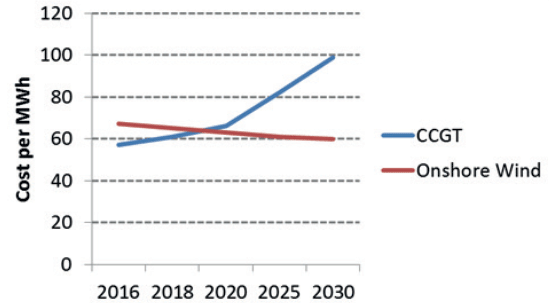Onshore wind policy statement: consultation paper
Statement reaffirming Scottish Government's existing onshore wind policy and seeking views on issues relating to supporting the sector.
1. Introduction - The Case For Onshore Wind
We are publishing this draft statement, alongside the draft Energy Strategy. Onshore wind development is essential to Scotland's transformation to a fully decarbonised energy system by 2050 and brings opportunities which underpin our vision to grow a low carbon economy and build a fairer society.
This statement reaffirms the Scottish Government's existing onshore wind policy set out in previous publications and seeks views on a number of issues related to supporting the sector. It includes separate sections on key priority areas:
- Route to market
- Repowering
- Developing a Strategic Approach to New Development
- Barriers to deployment
- Protection for residents and the environment
- Community benefits
- Shared ownership
Our current policy is to support deployment of onshore wind, whilst protecting the environment (landscape and visual, ecological and other environmental impacts); protecting residential amenity; and maximising local benefits, including through promoting shared ownership and community benefits.
Economic Benefits of Onshore wind in Scotland
The Office of National Statistics ( ONS) figures on the low carbon and renewable energy economy in the UK for 2014 [1] show that:
for onshore wind, Scotland has 46% of all UK employment and 57% of all UK turnover; and
onshore wind activity (direct and indirect) accounted for £3.2 billion in turnover, 30% of total Scottish low carbon and renewable turnover. Onshore wind also accounted for 14% of total low carbon and renewable employment in Scotland.
Although electricity generation energy policy is largely reserved to the UK Government, the Scottish Government wishes to make full use of its devolved powers to promote investment in appropriately sited onshore wind.
A number of recent changes at both a UK and Scottish level have highlighted the need to reassess the role of onshore wind to ensure it continues to deliver maximum value for Scotland in terms of economic, social and environmental benefits.
The Scottish Government will continue to support further development of onshore wind in order to achieve the targets set by the Climate Change (Scotland) Act at the lowest cost. Onshore wind offers low carbon renewable electricity at scale and sustains growth and employment in the Scottish supply chain.
Levelised costs of onshore wind
- Onshore wind levelised costs (that is, the net present value of the unit-cost of electricity over the lifetime of a generating asset) are projected to fall to £63 per megawatt hour, below the cost of a CCGT gas station in 2020, with gas becoming increasingly expensive in comparison to onshore wind out to 2030 (set out in the chart below).
- Onshore wind is also estimated to be more cost effective than new nuclear generation out to 2030.
Fig 1.

Source: BEIS [2]
The strategic importance of onshore wind to our decarbonisation ambitions has been reinforced in the analysis undertaken for the draft Climate Change Plan [3] . The installed capacity of Scottish onshore wind in 2016 was 5.5 GW; overall renewables electricity capacity of between 11 and 17 GW is now modelled in the Climate Change Plan to help to meet our wider decarbonisation target in 2032.
Contact
Email: Debbie Kessell
There is a problem
Thanks for your feedback